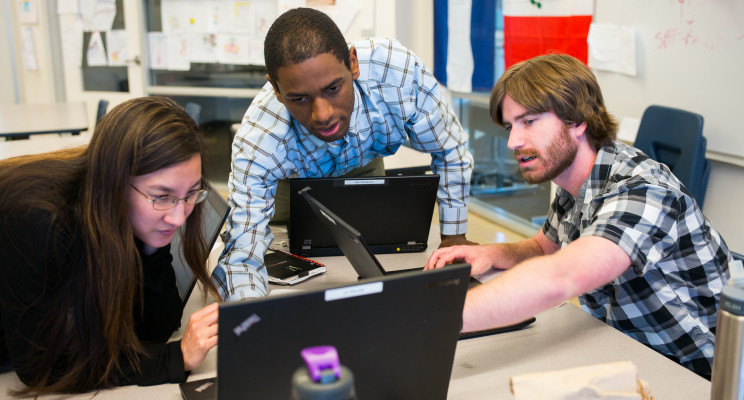
The classroom of the future
Textbooks are becoming obsolete as software is finally changing how students learn.
I read more than my share of textbooks. But it’s a pretty limited way to learn something. Even the best text can’t figure out which concepts you understand and which ones you need more help with. It certainly can’t tell your teacher how well you grasped last night’s assigned reading.
But now, thanks to software, the standalone textbook is becoming a thing of the past. Suppose you’re taking high school algebra. Instead of just reading a chapter on solving equations, you can look at the text online, watch a super-engaging video that shows you how it’s done, and play a game that reinforces the concepts. Then you solve a few problems online, and the software creates new quiz questions to zero in on the ideas you’re not quite getting.
All of this is a complement to what teachers do, not a replacement. Your teacher gets a rich report showing what you read and watched, which problems you got right and wrong, and the areas where you need more help. When you come to class the next day, she is equipped with a ton of specific information and suggestions to help her make the most of her time with you.
When I told you about this type of software in previous letters, it was mostly speculative. But now I can report that these tools have been adopted in thousands of U.S. classrooms from kindergarten through high school. Zearn, i-Ready, and LearnZillion are examples of digital curricula used by students and teachers throughout the U.S. More than 3,000 schools are teaching a free digital course that I fund called Big History, which uses software to give students immediate feedback on their writing assignments.
What’s next? The same basic cycle you go through for all software: Get lots of feedback on the existing products, collect data on what works, and make them better. This cycle is picking up steam as more states and districts gain confidence about using digital curricula in their schools. I hope this growing momentum will inspire more of the big textbook publishers, which have been slow to offer these kinds of tools.
In the meantime, I haven’t heard from anyone who misses their heavy, expensive textbooks.
In addition to adapting to what students know, these online tools also facilitate a new approach to teaching and learning that adapts to who these students are.
In 2019, the typical college student is no longer the stereotypical student who lives in a dorm and graduates in four years after a few spring breaks somewhere warm. Almost half of today’s college students are 25 or older; well over half have a job; more than a quarter have kids of their own.
These “nontraditional” students often don’t have the time or resources to effectively navigate an inefficient, inflexible learning environment designed to meet other people’s needs. That’s a big reason why two out of every five students who enroll in higher education will either withdraw for a while or drop out altogether.
Digital learning tools can help students meet these challenges—by making college more affordable, more convenient, and more effective.
One study found that using open courseware saved students an average of $66 to $121 per course. (Over an academic year, that can add up to $1,000, which can be the difference between staying in school or having to drop out.) Another found that students who used digital learning tools for introductory classes got better grades than students who learned in the traditional way. And, of course, those students had a lot more flexibility. Not having to show up to a physical classroom at a specific time makes a big difference to students who are balancing school with working and raising a family.
Put it all together, and you have students spending less for more convenient classes in which they perform better. In short, we now have the tools to redesign higher education so that it meets the needs of today’s students.
Read more in our 2019 Annual Letter.
GCC
4yScience and technology are progressing. As a student, our learning journey has changed again and again: from the beginning of book education to the current teaching of science and technology. All questions can be queried via the online network, but there are sometimes hidden dangers that can not be controlled. All things have a double aspect. I support the teaching of technology, but I worry too because it will make us lazy and dependent. Too strong.
Culture & Learning Strategist • Keynote Speaker • Storyteller • Board Governance • Host, Authors in Conversation®
4yVery insightful perspective on the how we see the learning landscape and the need to embrace change that helps to innovate education. Blended learning places the learner at the heart of the process and innovative processes to facilitate how knowledge is absorbed and translated. Thanks Bill Gates for sharing and your contribution to the industry.
What will the classroom 4.0 looks like and when do we get it for our kids? Great effords and goals are made in adaptive e-learning with AI technology.
Electro Mechanical Engineer at Horizon plantations flour and food factory
4yDear, All has been said for the wellbeing of human! Maintaining books alongside is a great wisdom. Boldly speaking electronic devices may be disordered as the trafficking and sophistication alarmingly booming! Consequently I would like to forward my kind request for every responsible body to think of this threat, especially research centers at Universities!